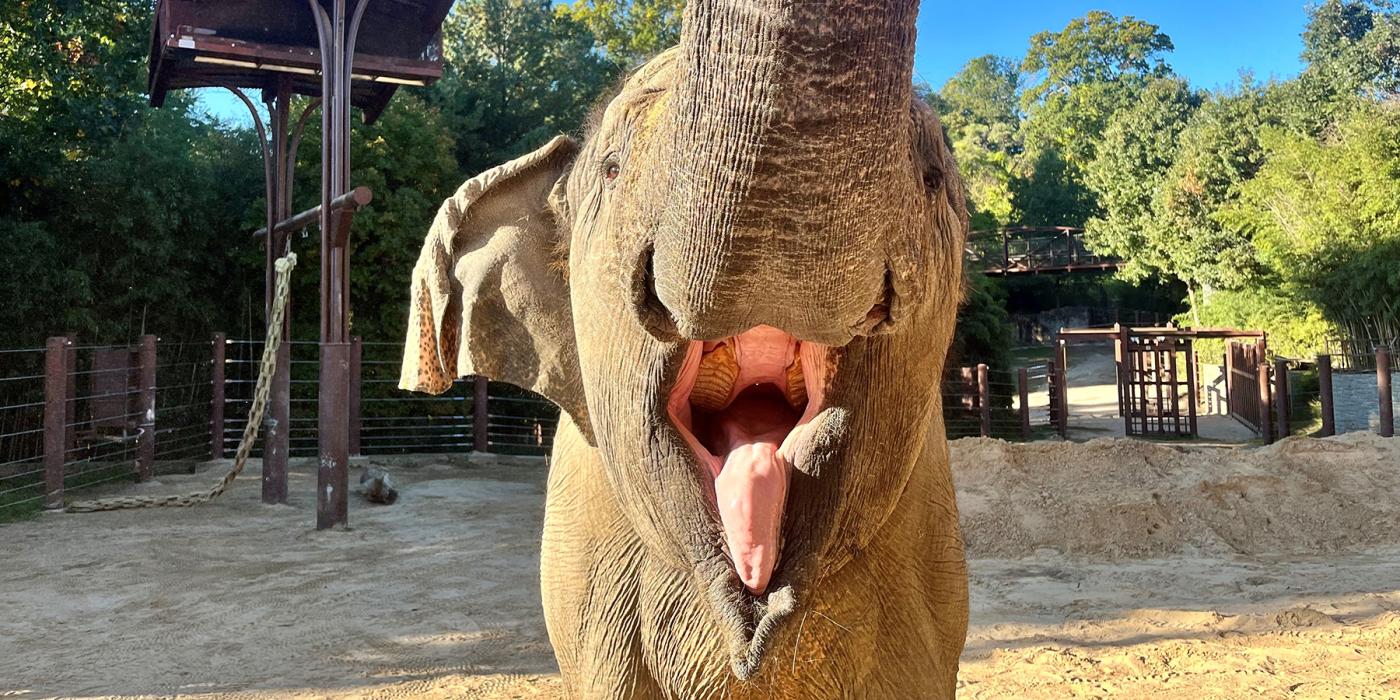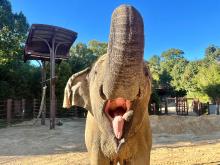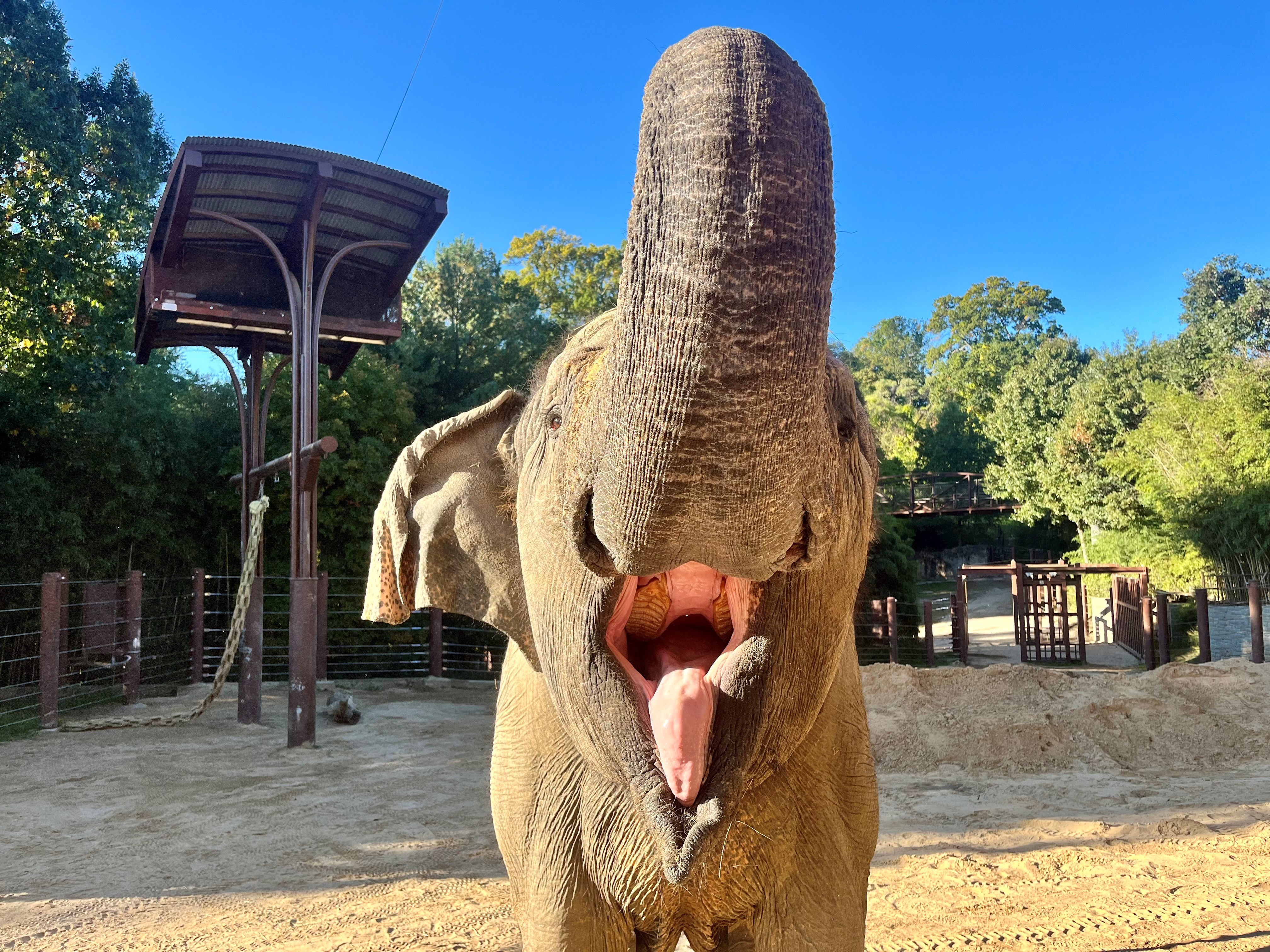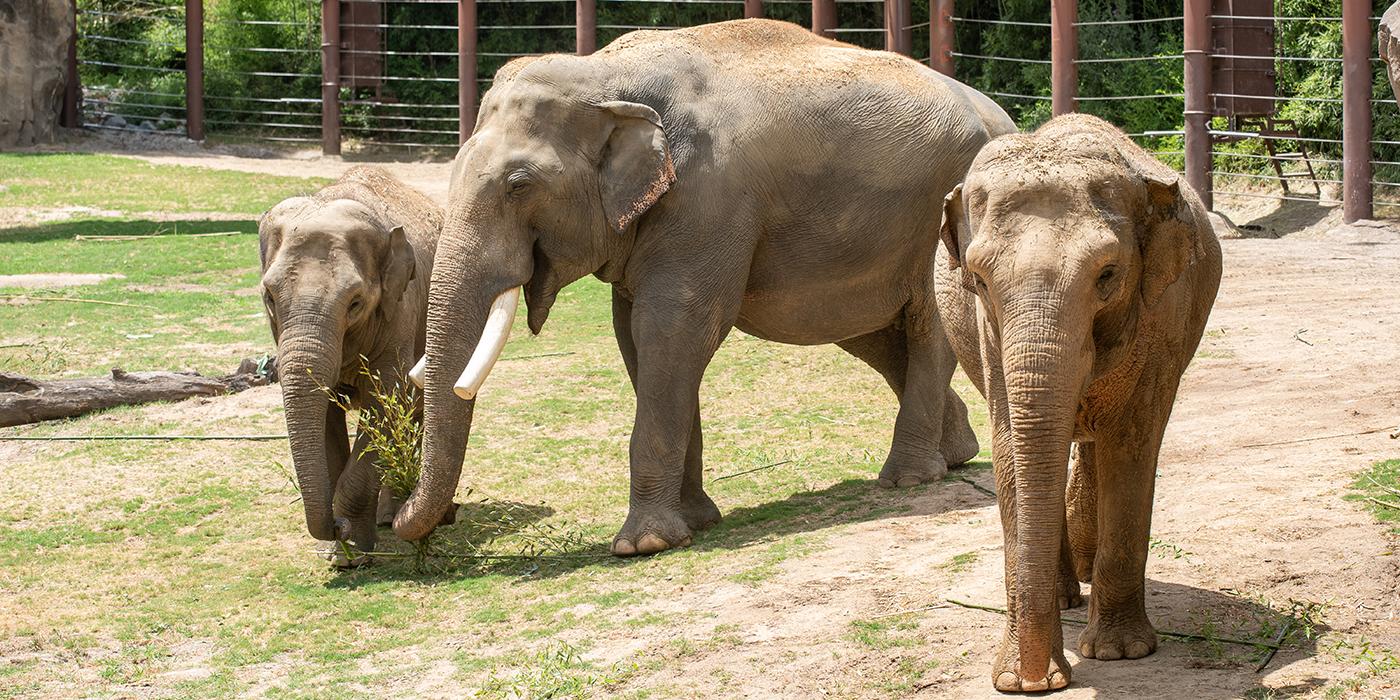Elderly Female Asian Elephant Dies at Smithsonian’s National Zoo and Conservation Biology Institute

The Smithsonian’s National Zoo and Conservation Biology Institute community is mourning the loss of Kamala, beloved member of its Asian elephant herd and ambassador for her species. After a decade of managing and treating Kamala’s osteoarthritis, animal care staff recently noted her physical condition had irreversibly declined. They elected to humanely euthanize her Nov. 1. Born in the wild, Kamala was estimated to be around 50 years old, which is considered advanced age for this species.
The elephant care team fondly remembers Kamala as a smart and inquisitive individual who held a dominant role within the herd. She built strong bonds with her keepers and enjoyed their attention. Whenever keepers approached, she would rumble and squeak, behaviors that indicated her happiness and excitement.
Like many aging animals, Kamala had osteoarthritis, a degenerative disease affecting joint cartilage and the underlying bone with associated pain and stiffness. When she first arrived at the Zoo in May 2014, animal care staff noted that she had unusual joint confirmation—her front legs were knock-kneed, while her back legs bowed out. This changed Kamala’s gait and shifted her weight in a way that predisposed her to developing osteoarthritis.
While arthritis does not have a cure, animal care staff implemented innovative ways to control Kamala’s condition, ease her discomfort and improve her overall quality of life. For many years, they successfully managed her disease with multi-modal therapies. The animal care team administered monthly injections to help inhibit the breakdown of cartilage and connective tissue and improve the viscosity of the fluid in her joints. Kamala received multiple different intraarticular therapies over the years to treat her arthritis, including rounds of intra-articular (joint) injections of interleukin-1 receptor antagonist protein—a treatment using autologous conditioned serum to slow the progression of osteoarthritis. The team managed Kamala’s comfort using non-steroidal anti-inflammatories, pain medications and joint supplements.
As part of their daily husbandry routine, keepers collect data to track the elephants’ daily activity, movement, appetite and social interactions. Kamala, who was orphaned as a calf and raised by humans, was strongly bonded to her caretakers. She voluntarily participated in routine training sessions as well as twice-daily physical therapy sessions, which allowed keepers to observe Kamala up close.
Over the past several weeks, keepers noted although Kamala would try to do the behaviors asked of her, the range of motion in her wrists, hips and shoulders was increasingly limited. To accommodate Kamala’s physical limitations, keepers gave her and her herd mates, Swarna and Maharani, access to the Elephant Community Center and adjacent outdoor habitat, the grounds of which are flat. Despite the team’s efforts to encourage Kamala to explore the exhibit, she increasingly chose to stand in one spot rather than move about. It was clear her osteoarthritis had progressed to the point where the pain medications no longer kept her comfortable. The animal care team was concerned side effects from prolonged use of the medications would be detrimental to her health. Given Kamala’s declining quality of life and poor long-term prognosis, animal care staff made the decision to humanely euthanize her.
Kamala's euthanasia took place in the Elephant Barn. The other members of the Zoo's Asian elephant herd—Maharani, Swarna, Spike, Bozie, Trong Nhi and Nhi Linh —were not present for the procedure, but were given an opportunity to spend some time with their deceased herd mate. Many scientists believe that the process of exploring the body of the deceased elephant is a recognition of the death and is likely part of a grieving process. Elephants will commonly touch the temporal glands, ear canal, mouth and trunk tip. Often, they will make a rumble vocalization while inspecting the body. Keepers granted Spike access first, and he gently explored her head, mouth and trunk inquisitively. Next, Bozie, Trong Nhi and Nhi Linh visited and exhibited some of the same behaviors as Spike. They were gentle, calm and respectful. Swarna and Maharani were the last to visit. Maharani spent quite a long time investigating the body, blowing into her mouth and trunk and nudging Kamala’s head. The elephant team put Spike, Swarna and Maharani together in a social group to spend the afternoon and evening together and report they calmly and peacefully went about their routine.
Born in Sri Lanka around 1975, Kamala lived at the Pinnawala Elephant Orphanage until 1976 when she and Swarna moved to the Calgary Zoo in Calgary, Alberta, Canada. Most Zoo animals participate in the Association of Zoos and Aquariums’ Species Survival Plan (SSP). The SSP scientists determine which animals to breed by considering their genetic makeup, nutritional and social needs, temperament and overall health.
Kamala birthed two offspring at the Calgary Zoo: male Calvin in June 1986 and female Maharani in 1990. Long before Kamala moved to the National Zoo with Swarna and Maharani in 2014, her son Calvin sired more than a dozen Asian elephant calves around the world. Notably, he was the father of Kandula, a male calf who was born at the National Zoo in 2001 via artificial insemination. Through her lineage, Kamala contributed greatly both to her species’ survival and to the legacy of the National Zoo’s Asian elephant conservation program. Her grandson Kandula currently lives at the Oklahoma City Zoo.
Native to 13 countries throughout South Asia and Southeast Asia, Asian elephants are considered endangered by the International Union for Conservation of Nature due to poaching, habitat loss and human–elephant conflict. Conservation scientists estimate the total population to be between 30,000 and 50,000 individuals.
For more than 50 years, scientists at the Smithsonian’s National Zoo and Conservation Biology Institute have been at the forefront of studying Asian elephants at the Zoo and in their native habitats. Together, they are creating a comprehensive view of Asian elephant biology, behavior, reproduction, health, genetics, migration, elephant endotheliotropic herpesviruses (EEHV) and the challenges surrounding human–elephant conflict. Because of its existing relations with U.S. and foreign governments, non-governmental organizations, and major academic and zoological institutions in elephant range countries, the Zoo is uniquely positioned to spearhead efforts that improve life for Asian elephants in zoos and save them in the wild.
About the Smithsonian’s National Zoo and Conservation Biology Institute
The Smithsonian’s National Zoo and Conservation Biology Institute (NZCBI) leads the Smithsonian’s global effort to save species, better understand ecosystems and train future generations of conservationists. Its two campuses are home to some of the world’s most critically endangered species. Always free of charge, the Zoo’s 163-acre park in the heart of Washington features 2,200 animals representing 400 species and is a popular destination for children and families. At the Conservation Biology Institute’s 3,200-acre campus in Virginia, breeding and veterinary research on more than 250 animals representing 20 species provide critical data for the management of animals in human care and valuable insights for conservation of wild populations. NZCBI’s more than 300 staff and scientists work in Washington, Virginia and with partners at field sites across the United States and in more than 30 countries to save wildlife, collaborate with communities and conserve native habitats. NZCBI is a long-standing accredited member of the Association of Zoos and Aquariums.
# # #
Photo 1 Caption: Asian elephant Kamala often raised her trunk to greet keepers in anticipation of receiving food. Photo 1 Credit: Robbie Clark, Smithsonian’s National Zoo and Conservation Biology Institute
Photo 2 Caption: Asian elephant Kamala participates in a training session with animal keeper Amanda Bobyack at the Elephant Trails outdoor habitat. Photo 2 Credit: Amanda Bobyack, Smithsonian’s National Zoo and Conservation Biology Institute
Related Species:
Image Gallery





